Transport is fundamental to connecting people, businesses and services. Much of the North of England’s economy depends on the performance of our roads, and with 97% of personal journeys and 88% of freight movements in the region made using our highways, roads are central to our way of life.
Collaborating with our Board Members we have identified and mapped a Major Road Network (MRN) for the North, This network, which includes both the Strategic Road Network (SRN) and important local roads, represents approximately 7% (by distance) of the roads in the North, and links the North’s important centres of economic activity, including the first and last miles to and from the SRN.
To operate well, the MRN must be seen as a fundamental part of an integrated transport network where people and businesses can make well informed choices on the best forms of transport for their journey.
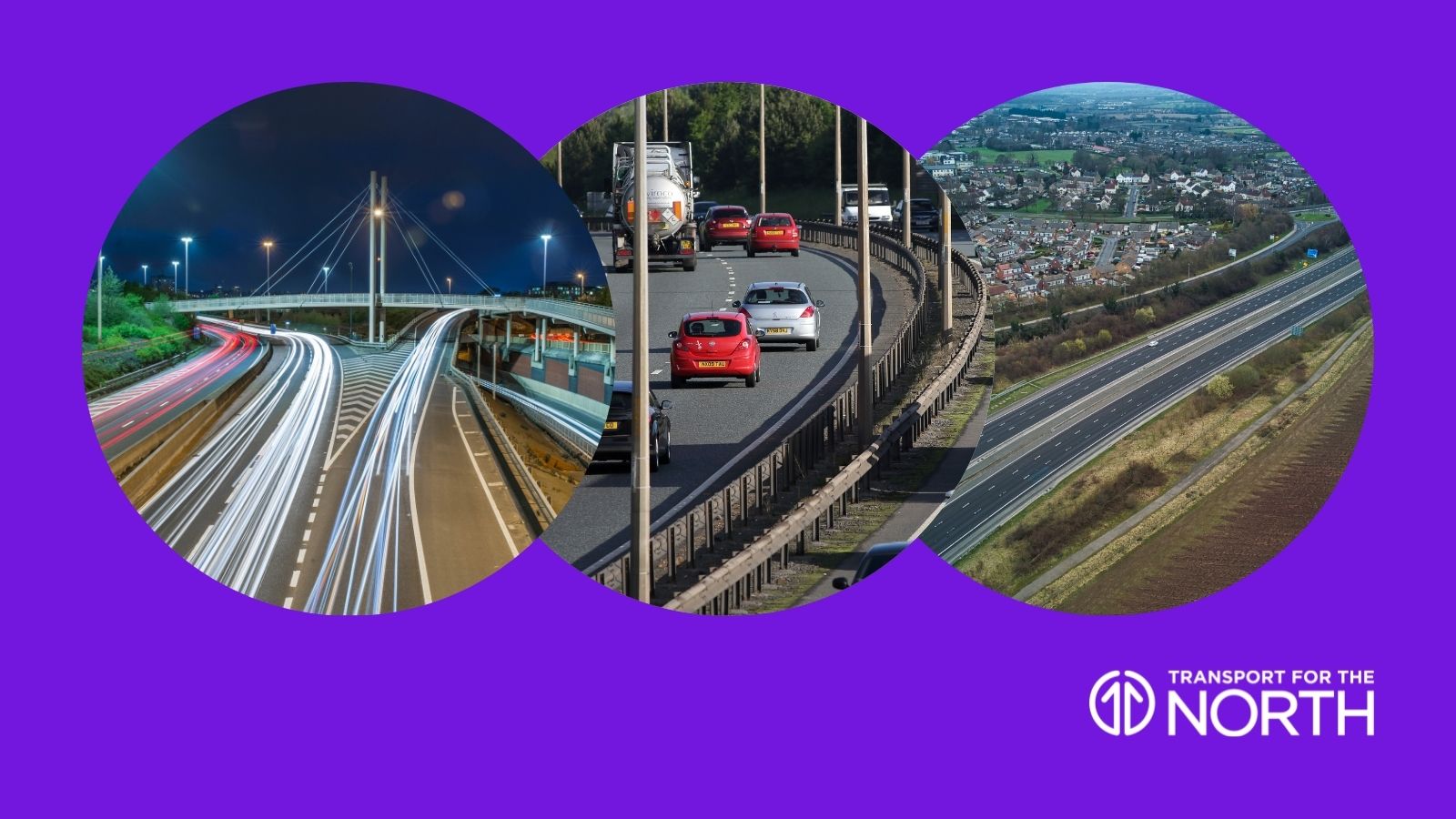
Our ambition is for everyone using roads in the North to experience one seamless network that enables sustainable, safe, reliable, and resilient multimodal journeys.
Our Major Road Report (MRR), published in December 2021 sets out the important role our highways must play as part of an efficient, effective and multimodal transport network.
The North is home to more than 15 million people and 1.1 million businesses, so when roads are not offering a reliable, efficient and practical way to move around, there’s a considerable impact.
“In the last century motorised transport revolutionised our way of life, and as we move towards the second quarter of the 21st century our highways will continue to be a fundamental part of our transport system,” said Martin Tugwell, Chief Executive of Transport for the North.”
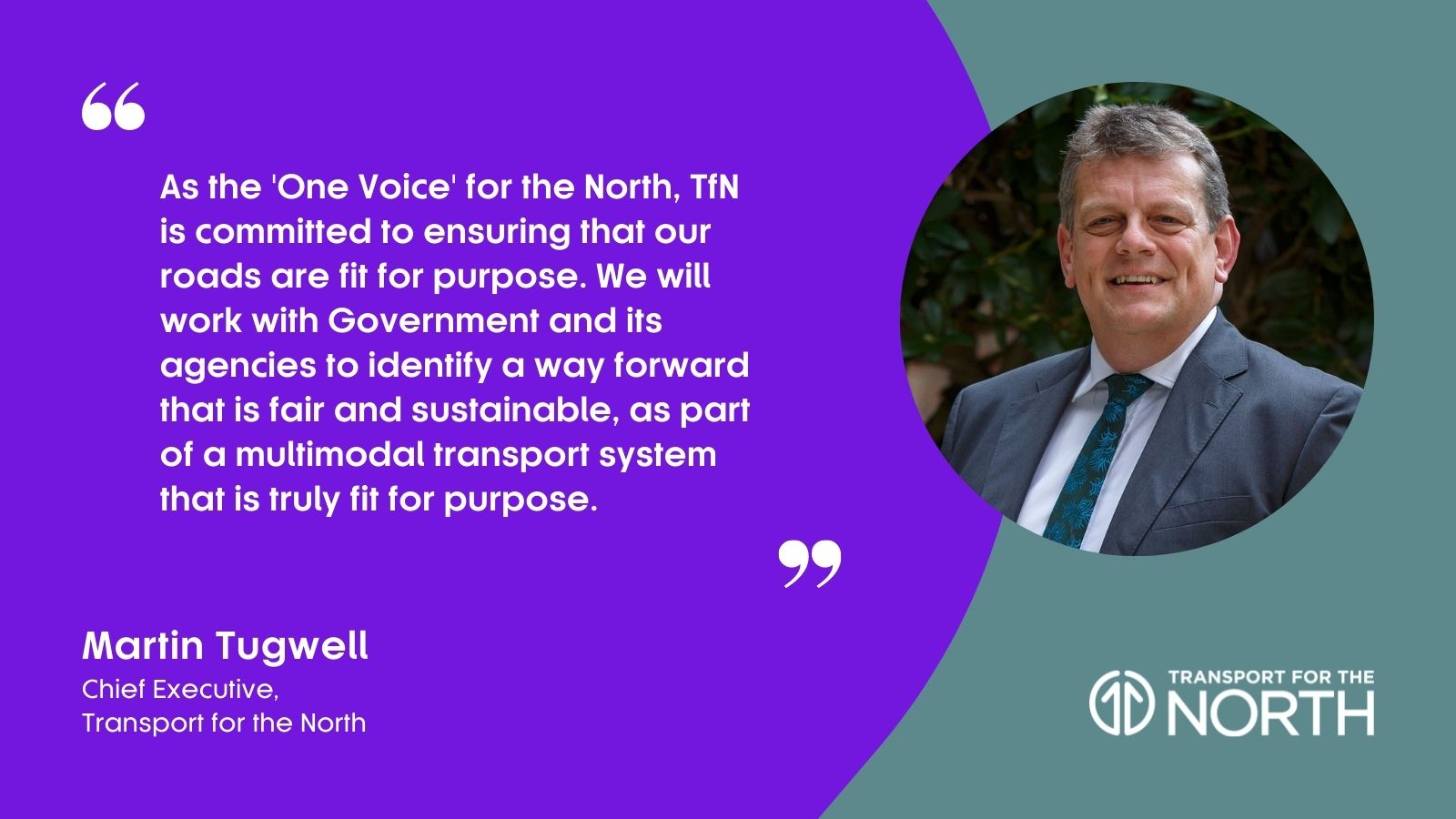
“As the ‘One Voice’ for the North, TfN is committed to ensuring that our roads are fit for purpose. We will work with Government and its agencies to identify a way forward that is fair and sustainable, as part of a multimodal transport system that is truly fit for purpose.”
The MRN is a live network of major roads that evolves to meet the emerging needs of the Northern Powerhouse and its connectivity priorities. The associated outcomes (also known as conditional outputs) and evidence base help define what we, our Members and partners, and our region’s people and businesses, need the MRN to deliver to help keep us moving, both now and in the future.
Conditional outputs, while common to the rail industry, are relatively new to highways and are a useful way to provide a vision for what the road network of the North needs to deliver. Rather than focusing on the performance of individual roads or routes, they allow us to benchmark the network against the outcomes that are vital for economic growth.
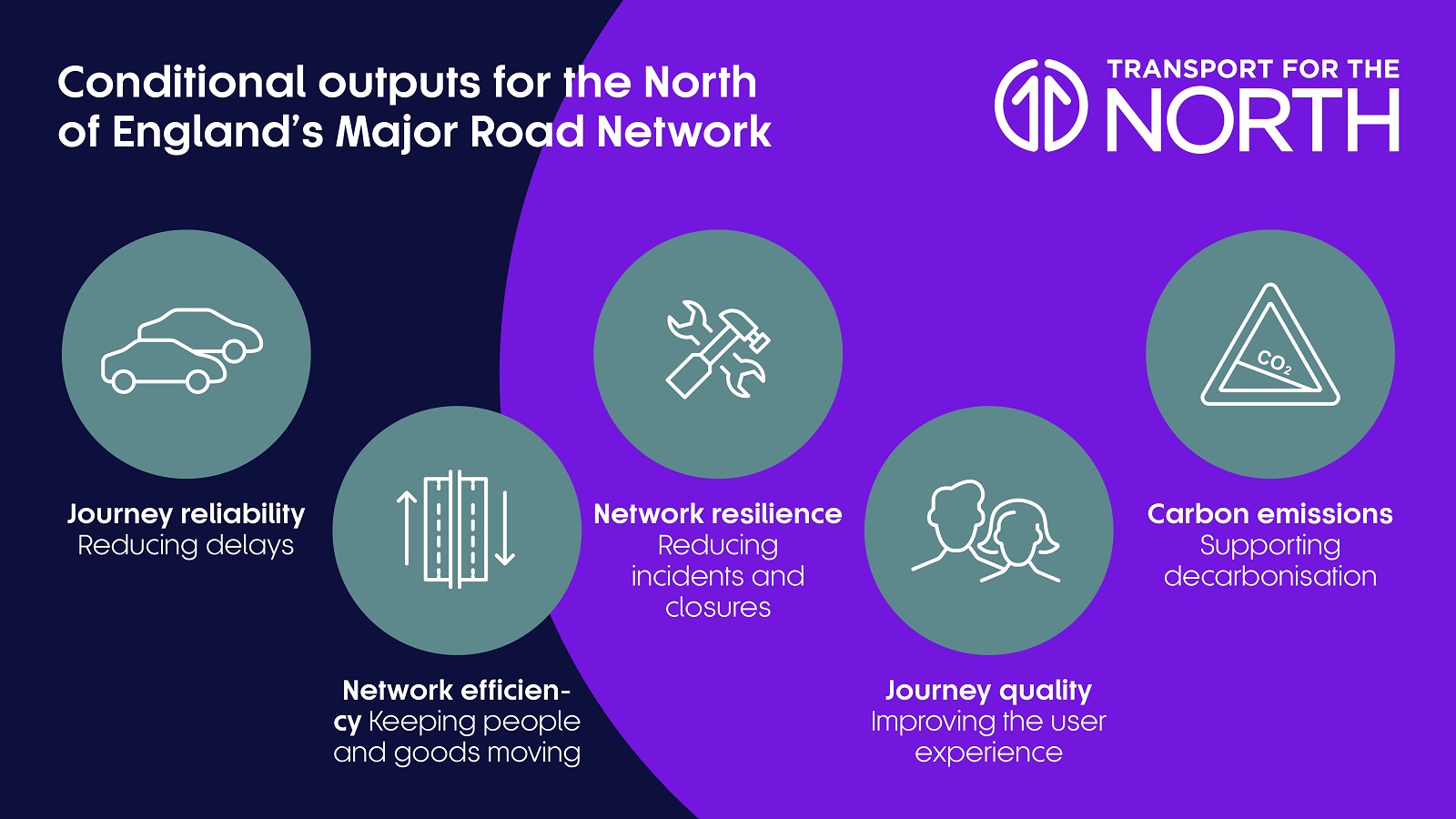
Working with our partners we have agreed a set of pan-Northern conditional outputs against which we aim to monitor the MRN and will use these to identify issues and develop proposed actions to improve performance. These include:
Journey reliability – where 90% of journeys on the MRN should not be delayed by more than 15 minutes for a 60-minute travel time.
Network efficiency – aiming to optimise the efficient flow of passengers and goods on the MRN and through the improved flow of traffic, and support for modern technologies to reduce emissions of pollutants and greenhouse gases.
Network resilience – aiming to reduce the number of incidences of closure of MRN routes leading to severe journey delay.
Journey quality – improving the customer experience of using the MRN, including the quality and availability of travel information.
Carbon emissions – reduction in carbon emissions from road transport in the North in line with TfN’s trajectory for achieving near-zero net carbon emissions from surface transport by 2045.
As mentioned above, we have identified four vital conditional outputs that we need our Major Road Network to deliver.
Journey reliability
Reliability and resilience are important for all users – the ability to get where people want, when they want, with a high degree of certainty and reduced delays, is a key selling point for any area for both residents, workers, and visitors. Better and more reliable transport connectivity supports greater opportunities for employment, collaboration, and knowledge sharing.
Network efficiency
Ensuring the MRN contributes to a sustainable and inclusive transport system is vital. It must meet the needs of its users, whether they are residents, businesses or visitors. The network must adapt to changing demands, such as shifting commuter patterns, changing leisure aspirations, more extreme weather conditions because of climate change, and the emergence of modern technologies to reduce emissions of pollutants and greenhouse gases.
As long as vehicles use fossil fuels, it will not be possible to achieve near-zero emissions in the North’s surface transport network. The typical life of a car is around 15 years, with some lasting longer in the fleet, meaning it will take roughly this long for zero emissions vehicles (ZEVs) to tip the balance and deliver the deep emissions reductions required to meet decarbonisation targets. It is therefore critical to introduce policies that will rapidly increase ZEV uptake as soon as possible.
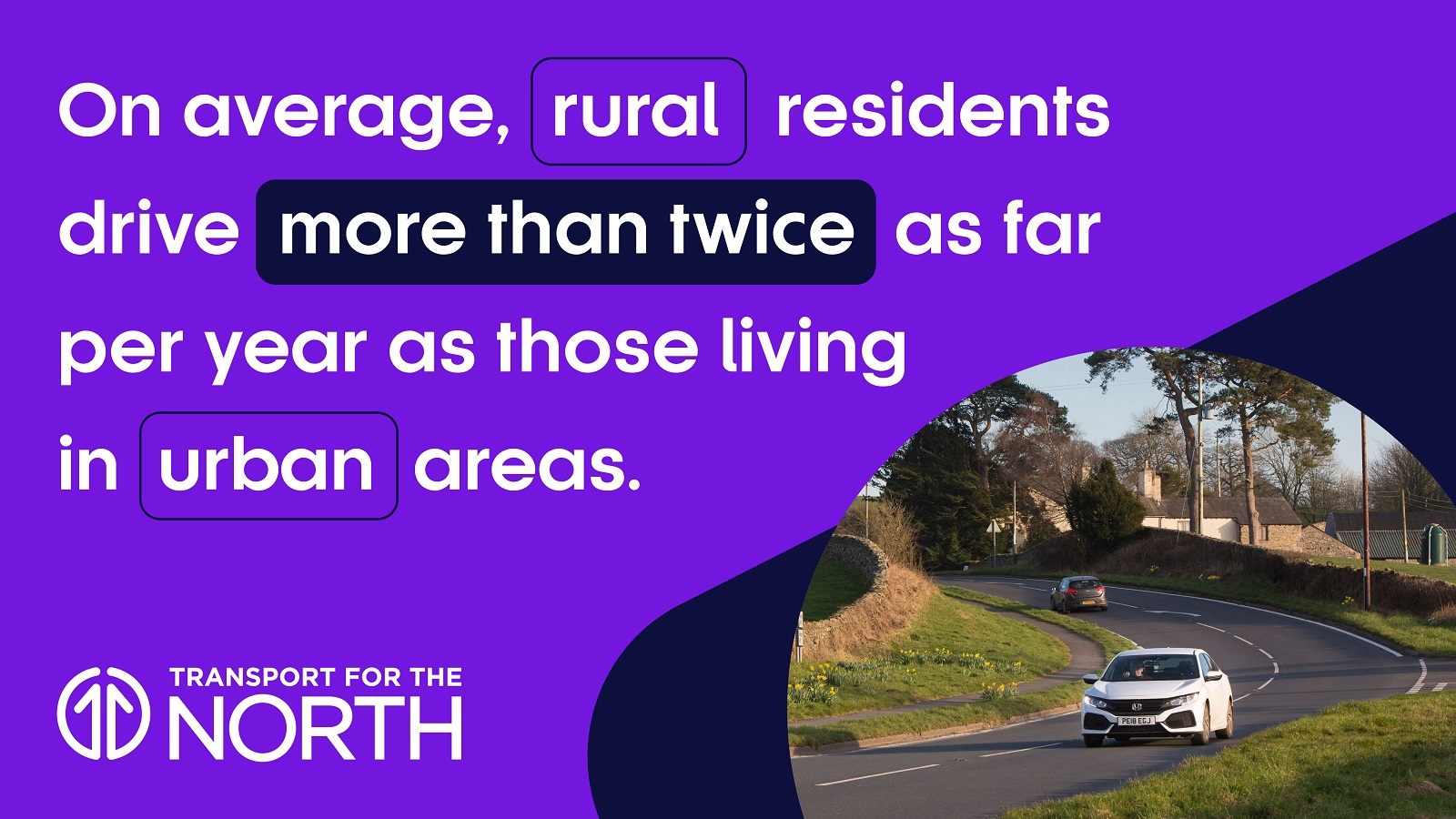
Network resilience
A lack of resilience within a transport network results in a failing transport network with poor journey times which impacts on productivity, economic growth and local business activity. It’s vital to have a road network that works efficiently without unnecessary delay to those travelling on it.
Journey delays impact different road users in different ways – for example, a delay from congestion affects the environment, with increased carbon emissions and poorer air quality. Network resilience aims to reduce the number of incidences of closure of MRN routes leading to severe journey delay.
Journey quality
We all rely on a well-functioning road network to access jobs, goods, and services. Investment in and better management of our roads has a vital role to play in improving the user experience which includes the quality and availability of travel information. A driver’s experience using the MRN is about more than just the quality and maintenance of roads – it’s also about how people feel – for example, road users want a safe, stress-free journey. For this to happen road users need to be provided with clear, reliable and factual information at all times, to help inform their decisions during journeys.

Carbon emissions
In the UK, surface transport is the largest contributing sector to greenhouse gas emissions, accounting for 22% of all emissions in 20191 , of which more than 95% are from road transport. Furthermore, transport emissions have grown overall since 2013, despite modest falls in the last few years.
To achieve a near-zero emissions surface transport network in the North by 2045, there must be a clear understanding of the policies and measures required to bridge the gap between future emissions projections and future emissions targets. TfN’s Transport Decarbonisation Strategy reflects work undertaken to define four plausible baseline emissions trajectories, based on our Future Travel Scenarios, and to identify and assess the gap between each trajectory and TfN’s Decarbonisation Trajectory.
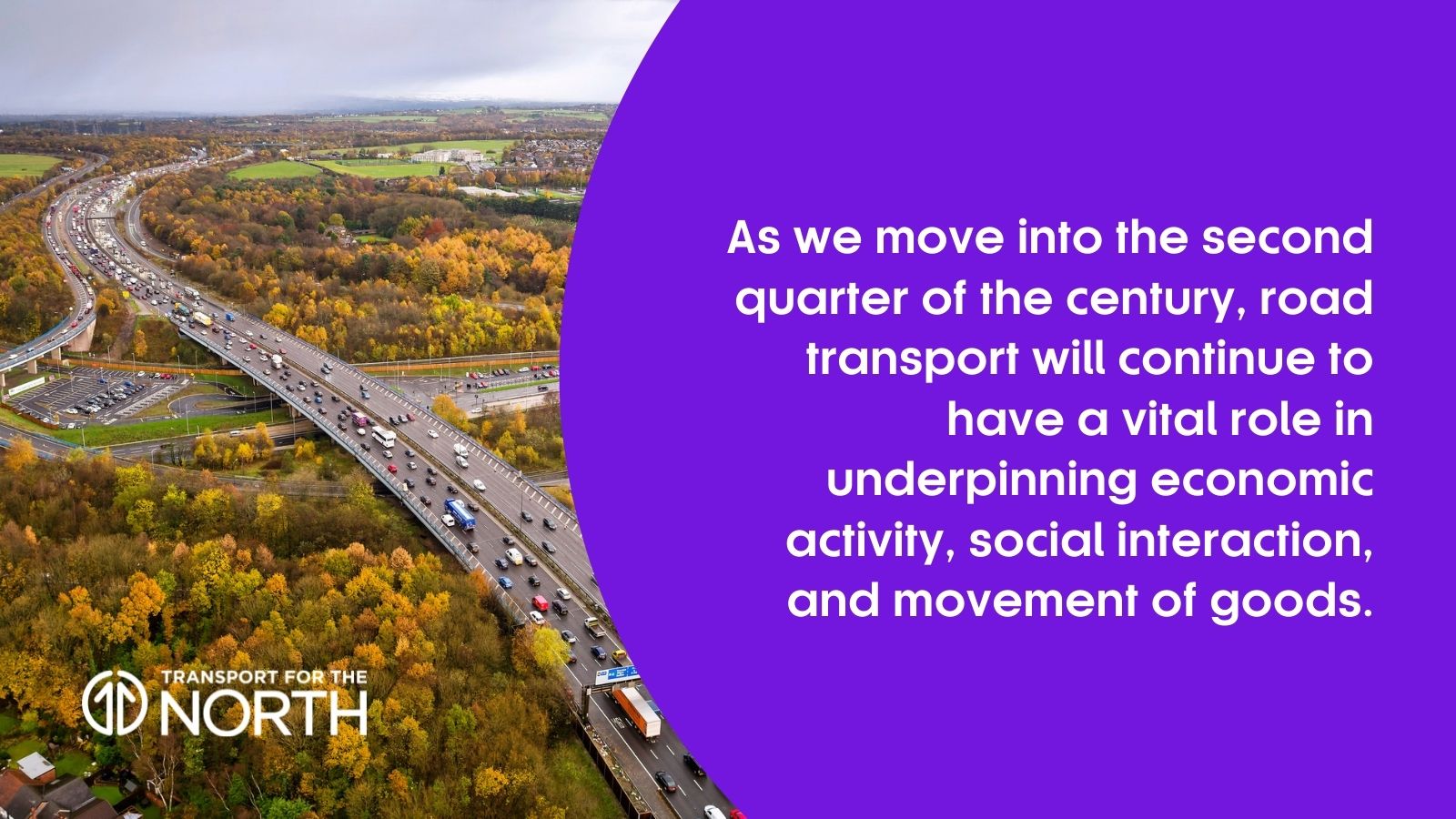
How we use these conditional outputs
As we move into the second quarter of the century, road transport will continue to have a vital role in underpinning economic activity, social interaction, and movement of goods.
To be fit for the future, how we manage, operate and invest in our transport networks, including the 85,000km of roads in the North (7,953km of MRN) should reflect the needs and priorities of our communities in the 21st century.
We believe this investment in the North’s road network is essential and will enable more efficient, sustainable, safe, reliable and resilient multimodal journeys for the benefit of the millions of people and businesses across our regions.
Through application of our Analytical Framework, assessing the transport benefits and wider social, economic and environmental outcomes of our proposed programmes of transport investment, we will provide a strong evidence base, and make recommendations for future policy decisions and transport investment, including investment on the MRN.